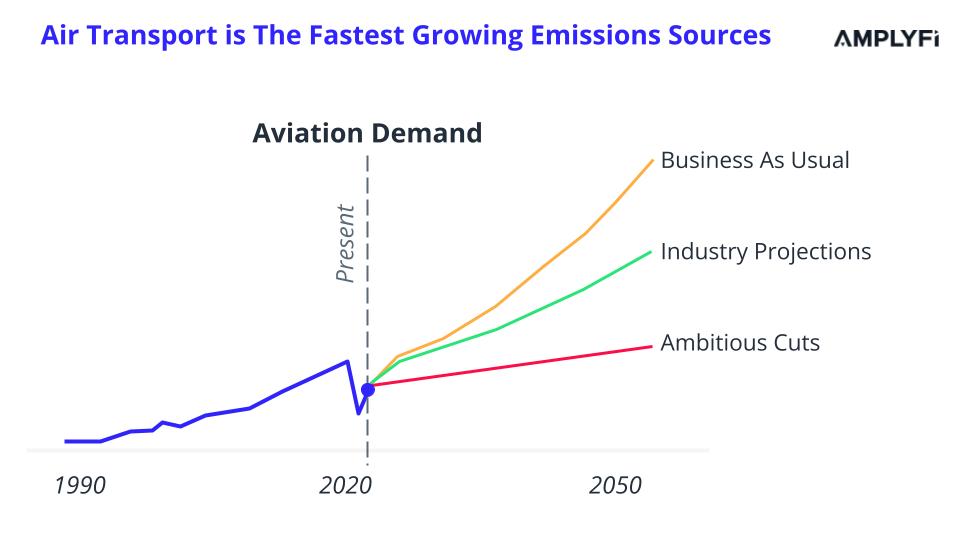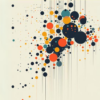
The global economy and connectivity depend heavily on air transport, contributing a staggering $3.1 trillion to world economic activity, adding $961.3 billion to the global GDP. With a rapidly expanding post-Covid air transportation industry, there is a predicted average annual rise of 4.3% in demand for air travel over the next two decades. While this growth signifies progress in globalisation and connectivity, it raises concerns about the industry’s environmental impact and energy efficiency measures.
From an environmental perspective, air transport has emerged as one of the fastest-growing sources of emissions while the World strives for carbon neutrality by 2050. The European Commission reports that aviation’s greenhouse gas emissions may increase more than 300% compared to 2005 levels. To address this issue, member States of the International Civil Aviation Organization (ICAO) unanimously committed to achieving carbon neutrality by 2050. Furthermore, major sectors within the industry are actively investing in energy-efficient technologies and implementing streamlined operations to shape a sustainable future for aviation.

The Need for Energy Efficiency in Air Transport
Environmental impact
Although air transport has been a catalyst for global expansion, the industry’s carbon footprint and emissions have raised legitimate concerns. Aviation alone is responsible for 2.5% of global CO2 emissions and 3.5% of global warming. It is not only CO2 that poses a problem; aeroplanes also release other harmful greenhouse gases, like nitrogenous and sulphur oxides, which have significantly higher global warming potential than CO2. Moreover, the white streaks (contrails) left behind by the aeroplane at high altitudes lead to the formation of cirrus clouds. Alarmingly, these clouds can trap heat and warm the planet two times more than CO2. These harmful effects highlight the pressing need to adopt cutting-edge technologies and eco-friendly fuels to promote cleaner skies.
Sustainability
The aviation industry’s increasing demand for air travel requires higher consumption of fossil fuels. According to the IEA, aviation contributes around 15% of the global oil demand increase by 2030. This heavy reliance on a finite resource calls for the implementation of viable alternatives to sustain operations if we run out of fuel reserves. Biofuels offer promising solutions as they can be produced from renewable resources and serve as a substitute for traditional oil. By embracing these fuels, the aviation sector can reduce reliance on traditional energy sources and mitigate the environmental impact.
Technologies Promoting Energy Efficiency
Sustainable Aviation Fuels (SAFs)
Sustainable aviation fuels are derived from renewable resources, like algae, agricultural residue, or waste oils. SAFs offer the same level of performance as other petroleum-based fuels but with a much lower carbon footprint. According to Air Transport Action Group, by utilising SAFs, greenhouse gas emissions can be reduced by up to 80% without extensive modifications to existing aircraft designs or infrastructure. Additionally, the International Air Transport Association IATA states that SAFs could contribute approximately 65% of the necessary emission reductions for aviation to achieve carbon neutrality by 2050. By replacing traditional jet fuels with SAFs, the industry can propel itself toward a sustainable future with net-zero emissions.

Electric and Hybrid-Electric Aircraft
Electric aircraft rely solely on electric motors powered by batteries, eliminating the need for fossil fuels. In contrast, hybrid-electric aircraft combine traditional combustion engines with electric propulsion systems to enhance efficiency and reduce emissions. Both types of aircraft offer greater energy efficiency than their conventional counterparts. According to an estimate, electrifying all flights under 2500 miles, which account for more than half of aviation’s CO2 emissions, could massively reduce the carbon footprint. Moreover, electric motors have the added advantage of higher conversion rates than internal combustion engines, which translate into longer flight durations and improved range capabilities for these eco-friendly planes. These aircraft also offer a lower noise footprint making them well-suited for urban areas.
Lightweight Material and Aerodynamic Modification
Aircraft manufacturers are adopting lightweight materials, such as carbon composites and aluminium alloys, to reduce aircraft weight. Reducing aircraft mass increases efficiency as lightweight aircraft require less thrust and uplift force and account for lower fuel consumption and emissions. For example, Boeing 787 experienced a 10-12% increase in efficiency after a 20% reduction in mass. In addition, aerodynamic innovations such as blended winglets and laminar flow wings reduce drag, allowing aircraft to soar through the skies with enhanced fuel efficiency.
Embracing technologies like sustainable aviation fuels, electric/hybrid-electric aircraft, and aerodynamic modifications promote sustainability by significantly reducing carbon emissions and fuel consumption in air transportation.
Operational Practises for Energy Efficiency
1. Continuous Descent Approach (CDA)
The Continuous Descent Approach (CDA) is widely adopted in aviation for energy efficiency. Traditionally, aircraft descend in stages as they approach airports. In contrast, CDA enables smooth, uninterrupted descents, reducing fuel consumption and emissions. Airports practising CDA have witnessed a significant decrease in CO2 per landing; for example, Manchester Airport has reduced its additional CO2 per landing from 79 kg to 59 kg by practising CDA in 44.1% of flight landings.
2. Single-Engine Taxiing
Single-engine taxiing is another practice that contributes to energy efficiency in aviation. An aircraft on the ground typically uses both engines to move. However, airlines can reduce fuel consumption and emissions by 20 to 40% by using only one engine during taxiing. This practice is particularly effective during periods of low traffic congestion at airports.
Despite the challenges, such as the ineffectiveness of single-engine taxiing during peak times, these operational practices enhance fuel efficiency, reduce operating costs and promote sustainability in the aviation industry.
Sustainability Strategies and Objectives of Major Airlines
| Name | Sustainability Strategies and Objectives |
|---|---|
| American Airlines |
|
| The US Air Force |
|
| British Airways |
|
| Delta Airlines |
|
| Emirates |
|
| Scandinavian Airlines |
|
| Lufthansa Group, |
|
Conclusion
To achieve a greener future, stakeholders in the aviation industry must invest in research and development efforts to enhance energy-efficient technologies. By adopting these transformative innovations, stakeholders can contribute to a more sustainable aviation sector that balances our desire for global connectivity with our responsibility to protect our planet’s precious resources.








